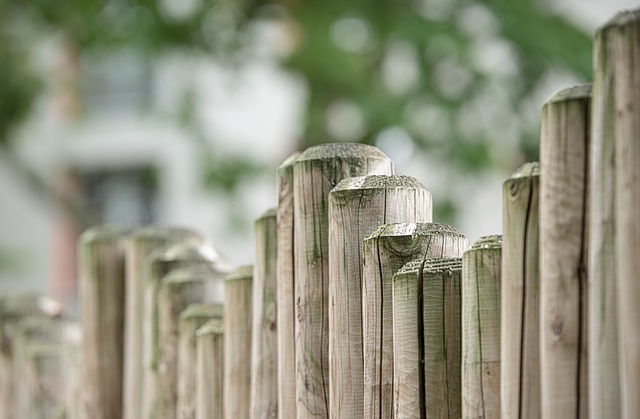In New Bedford, MA, the quest for environmentally conscious solutions extends to outdoor spaces, particularly fencing. This article explores eco-friendly fencing materials and their multifaceted benefits for both homeowners and the local ecosystem. We delve into sustainable options available, highlighting their advantages over traditional fences. From reduced environmental impact to aesthetic appeal, discover popular green choices and essential installation tips tailored for New Bedford residents seeking a harmonious blend of style and sustainability.
- Eco-Friendly Fencing Options in New Bedford
- Benefits of Sustainable Fence Materials
- Popular Green Fencing Choices for Your Yard
- Installation and Maintenance Tips
- Local Availability & Environmental Impact
Eco-Friendly Fencing Options in New Bedford
New Bedford, MA, residents now have a growing array of eco-friendly fencing options to choose from. These alternatives offer both aesthetic appeal and significant environmental benefits while reducing the carbon footprint typically associated with traditional fencing materials. One such option is bamboo fencing, renowned for its rapid growth rate and strength, making it a sustainable choice that adds a unique visual element to any property.
Another popular option is recycled plastic fencing, crafted from post-consumer waste like bottles and containers. This material is durable, low-maintenance, and resists rot and pests, ensuring longevity without compromising environmental integrity. Furthermore, these eco-friendly options often align with local conservation efforts and can contribute to a more sustainable New Bedford community.
Benefits of Sustainable Fence Materials
New Bedford, MA residents increasingly recognize the value of sustainable fencing materials, which offer a multitude of benefits for both the environment and their communities. Firstly, these eco-friendly options minimize the environmental impact associated with traditional fencing by reducing waste, lowering carbon footprints, and promoting responsible land stewardship. Many are made from recycled or renewable resources, such as bamboo, wood from sustainably managed forests, or plant-based composites, diverting materials from landfills and conserving natural resources.
Moreover, sustainable fencing materials can enhance the local ecosystem. Some types, like those made from native plant species, support biodiversity by providing habitats for wildlife and contributing to overall ecosystem health. Additionally, these fences often require less maintenance, reducing the use of harmful chemicals and further minimizing environmental impact. In New Bedford, choosing eco-friendly fencing not only contributes to a greener and healthier city but also fosters a sense of community engagement with sustainable practices.
Popular Green Fencing Choices for Your Yard
In New Bedford, MA, homeowners looking to enhance their outdoor spaces with eco-friendly fencing options have a variety of green choices to consider. One popular and sustainable material is recycled plastic fencing. These products are made from post-consumer plastic bottles, reducing waste and the need for new resources. They offer durability, low maintenance, and a range of colors and styles to suit different yard aesthetics.
Another preferred option is natural wood fencing, specifically pressure-treated or naturally rot-resistant varieties like cedar or redwood. These materials are not only aesthetically pleasing but also provide excellent privacy and security while minimizing environmental impact compared to traditional treated woods that contain harmful chemicals. Local arborists and landscape designers often recommend these green alternatives for their longevity and contribution to a more sustainable community.
Installation and Maintenance Tips
When installing eco-friendly fencing materials, it’s crucial to follow manufacturer instructions for proper placement and spacing. This ensures structural integrity while maximizing the environmental benefits. Regular cleaning and inspection are key for maintenance. Remove any debris or vegetation that may accumulate on top of the fence, as this can compromise its performance. Inspect for any signs of damage, rot, or insect infestation, addressing issues promptly to prevent further complications.
For long-lasting durability, consider using natural, water-based preservatives and avoid harsh chemicals whenever possible. Simple care routines, like trimming vegetation around the fence line and keeping the area clear of debris, contribute to its longevity. Additionally, periodic re-staining or sealing can enhance the aesthetic appeal while protecting the material from the elements.
Local Availability & Environmental Impact
In New Bedford, MA, eco-friendly fencing materials are increasingly accessible, reflecting a growing trend toward sustainability in the construction sector. Native plant species and locally sourced wooden options are readily available, reducing the carbon footprint associated with transportation. This local availability not only supports area businesses but also minimizes environmental impact by encouraging the use of renewable resources.
The environmental benefits extend beyond local sourcing. Eco-friendly fencing materials, such as recycled plastic, bamboo, and treated wood from sustainable forests, significantly decrease the ecological strain compared to traditional options like vinyl or metal. These alternatives help preserve natural habitats, protect biodiversity, and mitigate water pollution, contributing to a healthier local ecosystem.
